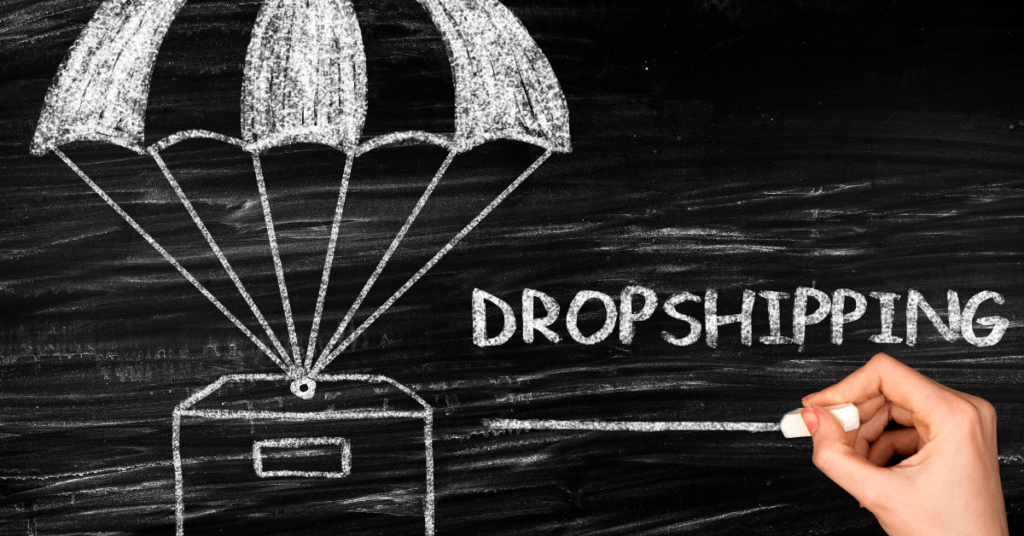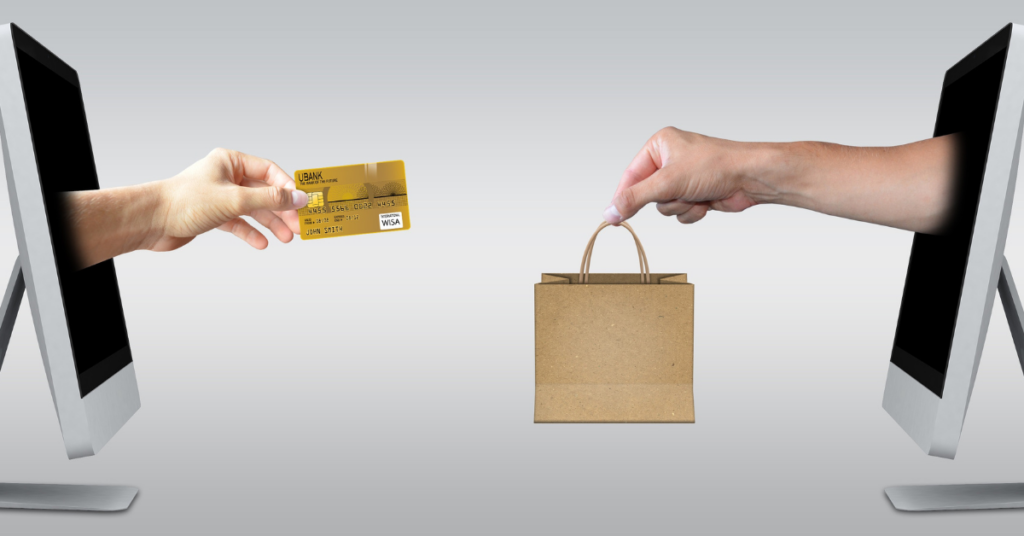There is a topic that people are always debating. Is Dropshipping dead? Or Is Dropshipping worth it? The truth is eCommerce business has been growing very fast in the past few years. Not only that, people are moving their life to online more than ever now.
Dropshipping itself has been around for a long time, and will still be around. The debates normally start with people that are still following the old advice on getting the supplier from Aliexpress or another China dropshipping marketplace, marking up the price and then selling it.
This method is no longer valid. People are looking for fast shipping and quality products. And the competition is fierce as many people are joining the eCommerce business now. Getting a common product from a marketplace and reselling simply won’t win in the game. There is no unique selling proposition for you to win in the business.
What is dropshipping?

Dropshipping is considered to be one of the easiest and low-risk online retail business models. The word dropshipping become popular with the eCommerce store builder, Shopify. You can see how many people are still searching for Shopify Dropshipping nowadays.
In the dropshipping business model, you don’t keep any inventory. Everything is handled by your supplier. Your focus will be getting the sales and handling customer service-related issues. And all the order processing, packaging, and shipping are handled by your dropshipping supplier.
In other words, dropshipping means you become the middleman between the supplier and the customers. You don’t hold any stock, but merely bridge them and earn in the price difference. You sell the products in your online store, and when a customer places an order, your supplier receives the order and ships it out to the customer.
This is a good business to start out with low investment. If you are going to manage everything yourself, your investment is huge, and you are going to risk losing your investment if the products bought do not sell.
But with dropshipping, you don’t face the risk at all. You are only in charge of selling the products. The stock keeping, packing and shipping are all done by your dropshipping supplier to your customers.
How Dropshipping Gain Its Popularity
Dropshipping had been a popular business model for the past 10 years. But is getting a boost for the past few years during the pandemic. People cannot go out to buy things and do business. And hence, everyone turned to doing business online. While many who are looking for this option are those who lost their job and are trying to get some replacements, they usually looking for a low-investment and low-risk business to start.
Not only that, as most were from the corporate world, they might have limited knowledge about starting and running a business. This is why running a dropshipping business is very suitable for them. They only need to focus on selecting the product to sell, deciding where to sell and getting traffic to sell the product. The rest of the order processing and fulfilment can be outsourced easily.
For example, suppliers like Printful or Printify are focused on print-on-demand business. Print-on-demand(POD) is also similar to a dropshipping business. Just for print-on-demand business, you will be in charge of the product design. And the POD supplier will print the final product and fulfil it for you.
Advantages of Dropshipping

Some benefits of dropshipping include:
- Low startup costs: Since there is no need to purchase and store inventory, the startup costs of a dropshipping business are relatively low compared to traditional retail models.
- No inventory management: Since the supplier is responsible for managing inventory and shipping products, you don’t have to worry about managing or storing inventory.
- Flexible location: A dropshipping business can be run from anywhere, as long as there is an internet connection.
- Wide range of products: Since you are free to use different suppliers and don’t need to purchase inventory upfront, you have the flexibility to offer a wide range of products without worrying about the cost of storing inventory.
- Easy to scale: Dropshipping makes it easy to scale a business quickly, as there are no physical limitations to how much inventory a retailer can stock.
Disadvantages of Dropshipping
While dropshipping has many benefits, there are also several challenges associated with this business model:
- Lower profit margins: Since you are not buying in bulk, and the product management is handled by the supplier, you will end up having a higher product cost. And this will result in lower profit margins compared to traditional retail models.
- Limited control over product quality: As you are not handling the order fulfilment process, you don’t know how is the product quality. You may run the quality check once in a while, but as you are not touching the products all the time, there are very limited things you can do to control the product quality. And your business reputation will be affected if the product quality is poor.
- Shipping and fulfilment issues: Since the supplier is responsible for shipping and fulfilment, you will have limited control over the order processing and shipping process. If the supplier does not ship products in a timely manner or if there are issues with delivery, it can result in customer dissatisfaction and lost sales.
- Huge competition: Due to the low startup costs and easy scalability of dropshipping, there is often more competition in the market. Furthermore, others can access the same supplier as you and sell the same product as you. If you can’t find your own unique selling proposition and stand out in front of your customers, it’s very possible that they will not buy from you.
- Branding challenges: Since you do not hold any inventory, it can be difficult to build a unique brand identity. Additionally, customers may not perceive you as a legitimate brand since they do not physically hold or ship the products.
How To Choose Good Products for Dropshipping

Choosing the right product is crucial for the success of any dropshipping business. Here are some steps to help you choose good products for your dropshipping store:
- Identify your target audience: Before choosing products to sell, it’s important to understand your target audience’s needs, interests, and buying behaviour. Conduct market research to identify which products are in demand and which ones would appeal to your target audience.
- Evaluate product demand: Use market research tools such as Google Trends, Amazon Best Sellers, and social media to identify trending products in your niche. Look for products with high search volume and a steady demand over time.
- Assess competition: Evaluate the competition for the products you’re interested in selling. Look for products with moderate competition, as products with the low competition may have low demand, while products with high competition can be difficult to market effectively.
- Consider profit margins: Calculate the profit margins for the products you’re interested in selling. Look for products with high markup, as these will provide a greater profit margin.
- Evaluate shipping and fulfilment requirements: Look for products that are easy to ship and fulfil. Products that are bulky, heavy, or fragile can be difficult and expensive to ship, which can impact your profit margins.
- Consider brand alignment: Choose products that align with your brand’s identity and values. This will help you build a strong brand image and connect with your target audience more effectively.
By following these steps, you can identify good products to sell in your dropshipping store that have high demand, moderate competition, good profit margins, and align with your brand identity and values.
How Much You Can Make from Dropshipping
Basically, there is no limit on how much you can make from dropshipping. It depends on how big is your business and what niche you are in. On average, dropshipping businesses make around 20%-30% on each sale.
So, to make $10,000 per month, you need to get $300 in profit per day. Which is $1,000-$1,500 in sales per day. But it all depends on how is your marketing strategy and how much is the money in your niche.
One of the big determining factors for your profit will be the number of customer complaints and refunds that you are going to handle. If you are having a huge refund rate and shipping delays, it will definitely affect your earnings and sales.
How to Start a Dropshipping Business

Now, dropshipping business is still very good and profitable if you are doing it right. You may hit the jackpot on the first hit, but most of the time, that’s not the case. You will first need to train and know how to build a successful business, and then, work hard on it and stay consistent to be successful. Don’t assume that it’s something to get rich quickly.
Here’s how you can start your dropshipping
Choose a niche
The first step in starting a dropshipping business is to choose a niche. A niche is a specific market or product category that you want to focus on. It’s important to choose a niche that you are passionate about and that has a high demand for products but relatively low competition. Research different niches to find one that fits these criteria.
You can spy on your competitor’s store, ads, and social media and see what’s trending or selling well.
Research suppliers
Once you have chosen a niche, the next step is to find reliable and trustworthy suppliers. Someone who offers quality products at competitive prices. You can search for suppliers on platforms like AliExpress, Oberlo, or SaleHoo. Look for suppliers who have positive reviews, offer good customer service, and have a fast shipping time.
Be sure that you communicate with the suppliers before picking them. By communicating with them, both of you will get to know each other and at the same time build a long-term partnership. So they will take care of your product quality and give your the best price.
Create an online store
The next step is to create an online store where you can showcase your products and sell them to customers. There are many platforms out there. You can use platforms like Shopify, WooCommerce, or BigCommerce to create your store. Or selling at the marketplace like Amazon, eBay or Etsy.
Choose a theme and design that suits your niche and create a logo and branding that reflects your business. You don’t need a complicated design store. Keep it simple, stupid. A clean and simple website will work well.
Your aim is to get them to buy, not to confuse them.
Choose and list products
Once you have set up your online store, the next step is to select the products you want to sell and add them to your store. Choose products that are in demand and fit your niche. Ensure that the product descriptions and images are accurate and attractive to potential customers.
Set up payment and shipping options
You will need to integrate payment and shipping options into your store. Use services like PayPal, Stripe, or Square for payments and services like USPS, FedEx, or DHL for shipping. Choose options that are convenient for your customers and make the checkout process as easy as possible.
Market your store
This is the crucial step to bring traffic or potential customers into your online store.
You may use social media, email marketing, SEO, and paid advertising to market your store. Do simple research to know where your target customers hang out the most. And focus on the marketing channels that are most effective for your niche and target audience.
Monitor and optimize
Data analysis is the key to online business success. This is also the advantage you can have for selling online. Differing from traditional business or marketing, you get to read and analyze the data of how your online store or marketing campaigns perform.
Then, you can use the data to optimize your store and improve customer experience. Monitor your profit margins and adjust prices and products as needed to ensure that your business is profitable.
Effective Marketing Strategy for Dropshipping Business
Now you should have all the basics required to start a dropshipping business. The next important thing would be implementing the marketing strategy to bring traffic to your online store.
1. Social media marketing
Social media platforms like Facebook, Instagram, and Twitter are good ways to promote your products and connect with potential customers. You need to have a content strategy and share high-quality images and engaging content that showcases your products and encourages people to visit your online store.
The key to social media marketing success is to stay consistent in your posting and interact with your audiences.
2. Influencer marketing
Collaborate with influencers who have a large following and influence in your niche. They can help promote your products to their followers, which can increase your brand awareness and drive traffic to your store.
These people already did great work congregating your target customers together. All you need is to pay to tap into the traffic they own to promote your products to their followers.
3. Email marketing
Email marketing is one of the highest ROI marketing strategies. Build an email list of interested customers and use email marketing to promote your products and special offers. You can build relationships with your potential customers via personalized emails and by providing value in your emails to them.
This is a good way to build trust and loyalty with your customers.
4. Search engine optimization (SEO)

Optimize your online store for search engines by using relevant keywords. You should optimise your product descriptions and images, and build high-quality backlinks.
This can help your store rank higher in search engine results, which can increase your visibility and drive more traffic to your store. This is essential for long-term organic traffic for your store.
5. Paid advertising
Using platforms like Google Ads, Facebook Ads, and Instagram Ads to target potential customers with ads, you can run targeted ads to show your products to potential customers.
And the beauty of paid advertising is you get almost instant traffic once you run the ad campaign. Not only that, you can use paid advertising to run A/B testing to optimize your online store and sales copy to maximize your sales.
6. Content marketing
Create high-quality content such as blog posts, videos, and infographics that educate and entertain your target audience. This can help build your brand and drive traffic to your store.
By using these marketing strategies, you can promote your dropshipping business and attract more customers to your online store. It’s important to be strategic in your approach and track your results to optimize your marketing efforts for maximum ROI.
Final Thoughts – Is Dropshipping Worth It?
Dropshipping is definitely a legit and very profitable business to start with. The dropshipping business model has reduced the risk of high investment and high inventory costs. The only difference is many people painted a very nice picture of the dropshipping business model. This made many beginners not willing to do work and expecting to get huge results.
If you decide to start, go ahead and start now. Don’t wait.





